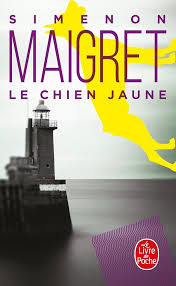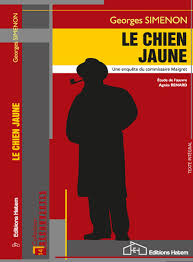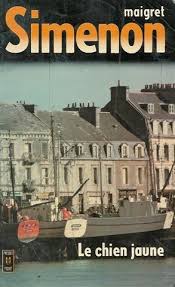
Maigret needs no introduction, and the choice of “Le Chien jaune”, popular enough to be made into a film only a year after its publication in 1931, seemed a promising choice for a French book group.
It began well, with a customs officer observing the murder by an invisible assassin of a well-liked wine merchant shortly after he leaves a hotel bar. Summoned to investigate, as Maigret sits in the bar, he witnesses an attempt to poison the dead man’s colleagues. Meanwhile, a yellow dog, origin and owner unknown, has begun to lie by the till.
There was general agreement that Simenon shows once again his gift for capturing the ambience of a place, in this case the Brittany fishing port of Concarneau, which in the early 1930s may well have been the kind of provincial, inward-looking community where fear and prejudice could easily be aroused and manipulated. The impact of the journalists, descending en masse from national newspapers and bent on sensationalising events, is well portrayed.

However, there is something lacking. Most of the characters seem quite wooden, stereotypes or caricatures, while the plot plods through a disjointed series of events, with some of the most dramatic scenes described by third parties.
There is too much reliance on implausible scenes, as when Maigret and Leroy just happen to be sitting on the hotel roof when an intriguing meeting between two characters is visible through a nearby window. Maigret’s public admission of a criminal act for which he is never charged, and turns out to have made to protect a suspect for whom he feels sympathy, is also ludicrous.

Maybe this is unfair, in that Simenon, arguably the French (he was actually Belgian) equivalent of Agatha Christie, was a pioneer in making detective fiction highly popular. By creating Maigret as such a flawed character, needlessly brusque, uncommunicative and high-handed, perhaps he set the trend for dysfunctional but talented detectives. In this case, Maigret’s talent seems hard to justify: while informing his hapless sidekick Leroy that he is acting on intuition rather than following procedures, the fact that he could in no way have deduced so accurately and then explained the details of the complex crime so clearly in the usual “denouement” scene leaves the reader feeling a bit cheated.
If detective novels have become so much more sophisticated and dramatic in recent decades, do we still want to read about Maigret? Credited with having written more than 400 novels, Simenon’s many “romans durs” (hard novels) like “Le Train” or “Le Chat” seem to have more merit: psychological novels with tight structures and clear, spare prose, a wide range of themes and contexts and “real” characters.
Simenon’s extraordinary life is also more gripping than this encounter with Maigret.